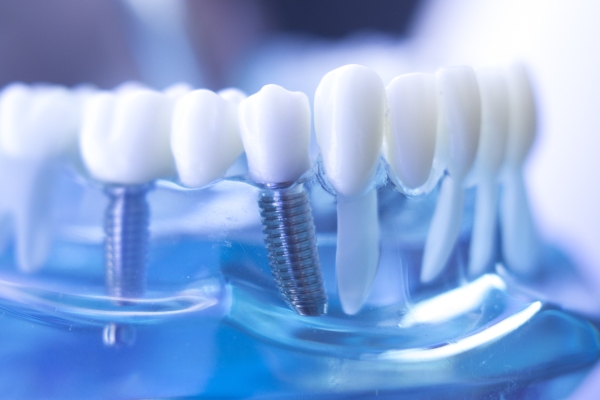A Step-by-Step Care Guide After Your Smile Makeover

When teeth become damaged, stained, or unsightly, a smile makeover can help you enjoy a beautifully restored smile. Many treatments improve not only the appearance of teeth but their function as well. It is important to have damaged teeth repaired promptly to avoid unwanted side effects, such as decay, infection, or tooth loss.
There are many options to choose from when it comes to getting a smile makeover. If staining and discoloration are an issue, professional whitening treatments can help. Veneers can also be used to hide stains that do not respond to tooth bleaching.
If you have chipped or cracked a tooth and the damage is minimal, dental veneers may be a possibility. However, if the damage is more severe, a crown may be the right choice. Both create a beautifully restored smile by covering your existing tooth with a porcelain or resin covering. Dental crowns simply require the removal of more of the natural tooth structure first and are often preferred for teeth towards the back of the mouth.
For missing teeth or those that are damaged beyond repair, a replacement will be recommended. Those who only want minimal dental work or have lost multiple teeth may want to try partial or complete dentures. Dental bridges are anchored to adjacent healthy teeth and can be used to replace up to four missing teeth in a row. For permanent, natural-looking results that help prevent bone loss, implants are a popular smile makeover option.
There are many more treatments a dentist can offer you to repair and enhance your smile. While most people can return to normal activities within a day or two of certain procedures, it is important to pay extra attention to your newly improved teeth, especially the first few days after a procedure. Many long-term changes may also be necessary to protect the look and longevity of a smile makeover.
Tips for caring for your smile makeover
In general, patients feel back to normal within a day or two after many procedures. While you are recovering from your recent dental work, follow these important steps for a faster and healthier recovery.
Follow the dentist's recommendations
Depending on the type of dental work your smile makeover involves, your dentist may give you very specific instructions for the first few days after the procedure. This may include:
- Taking the medication on a schedule to prevent pain, inflammation, or infection
- Cleaning the area with a specific technique
- Avoiding certain foods
- Getting an adequate amount of rest
Treatments that require the formation of a clot for healing may prohibit you from spitting or drinking through a straw for a few days as well. Failure to follow a dentist's orders could lead to unnecessary discomfort and prolonged healing time. It could also send you back to the office for additional work.
Manage pain and discomfort carefully
Some minor pain is often associated with any type of dental work. Cold compresses, salt-water rinses, and medication can all help with this. Be sure to follow the recommendations for medicating carefully.
Brush and floss with precision
While it may feel counterintuitive to clean an area that has just been treated, it is important to keep your mouth healthy, especially after a procedure. Continue to brush and floss as instructed by your dentist to help prevent bacterial buildup and infection. Using a soft toothbrush and a sensitivity-relieving toothpaste can help ease some discomfort.
Adjust your diet accordingly
Certain foods and beverages can stain a smile makeover and should be avoided, especially for the first few days after treatment. These can include:
- Red wine
- Coffee
- Dark soda
- Beets
- Berries
- Anything made with artificial dyes
Try to stay away from extremely hot or cold foods, as these can make sensitivity and pain worse. In addition, hard, sticky, or tough foods can cause discomfort from chewing and can damage some types of dental work.
Avoid unhealthy habits
Smoking, drinking alcohol in excess, teeth grinding, and chewing on foreign objects can all damage a smile makeover. Many of these are also harmful to your health and can injure your teeth and gums. Take steps to break these habits to better protect your mouth.
Conclusion
Taking a few simple steps to care for your teeth after a smile makeover can make the recovery process faster and easier. This can also help ensure that the dental work looks great and lasts longer. Above all, be sure to follow your dentist's instructions for home care and follow-up appointments to maintain a beautiful and healthy mouth.
Request an appointment here: https://www.martinimplants.com or call Martin Dentistry at (209) 299-7907 for an appointment in our Stockton office.
Check out what others are saying about our dental services on Yelp: Smile Makeover in Stockton, CA.
Related Posts
If you are seeking a smile makeover but have crooked or oddly-spaced teeth, braces could be a smart solution for you. Many adolescents have braces put on to straighten out their bites, but older adults can benefit from them as well.A smart way to determine whether you need braces is to see your dentist at…
Thinking about choosing a cosmetic dentist? Read on to learn more about what to consider during your search. To many patients, cosmetic dentistry is primarily a cosmetic enhancement. However, it often intersects with overall dental health. Therefore, it is important to consider several aspects before settling on a cosmetic dentist.Cosmetic dentists do more than enhance…
If you are unhappy with the appearance of your smile, you may want to consider consulting a cosmetic dentist. They can help you improve the aesthetic of your teeth and offer other treatments that will make your smile look brighter and more confident. This blog post will discuss five of the most important reasons to…
Dental restoration is a category of services that aims to restore the function and aesthetics of teeth damaged or lost due to decay, injury, or other dental conditions. It provides a variety of treatments and procedures, such as fillings, crowns, and dentures. This article will explore how dental restoration can significantly improve oral health and…


